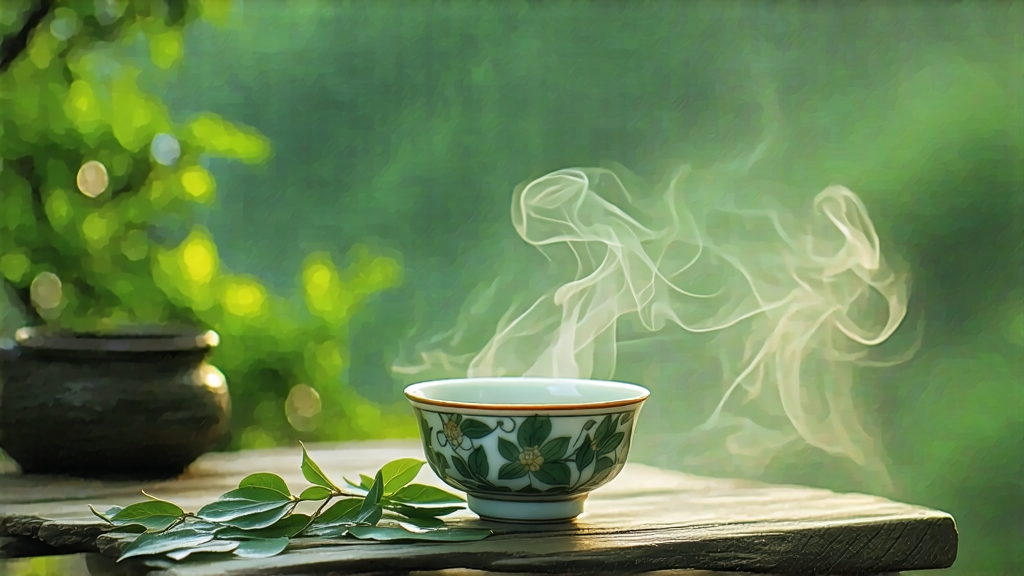
Alishan High-Mountain Oolong, known in Taiwan as “Alishan Qing Xiang Oolong,” is the island’s most celebrated gift to the world of tea. Grown between 1,000 and 1,400 metres on the forested spine of the Alishan range, this cultivar captures the cool breath of the Taiwan Strait and the mineral whisper of ancient red soils. To international drinkers it offers a gentle gateway into Chinese oolong complexity, yet to islanders it is a daily ritual that perfumes mountain homes and city offices alike.
History
Oolong technology migrated from Fujian’s Wuyi and Anxi counties during the 19th-century Qing exodus to Taiwan. settlers carried Qing Xin (“green heart”) cuttings in bamboo tubes, believing the cultivar’s fine root hairs would adapt to foreign mist. By the 1970s government agronomists, chasing higher value crops than betel nut, encouraged farmers to push tea gardens upslope into Alishan’s cloud belt. The first officially registered “Alishan High-Mountain” label appeared in 1983; since then micro-lots have won London’s Great Taste Awards and Tokyo’s International Tea Contest, turning a frontier crop into a luxury icon.
Terroir
Alishan’s diurnal swing can exceed 15 °C. Morning fog refracts sunlight into soft, silver wavelengths that slow photosynthesis, thickening leaf cuticles and concentrating glutamic acid—the compound behind the tea’s natural umami sweetness. At noon the maritime monsoon lifts, allowing cool air to drain down ravines and preventing the sourness that plagues lower elevations. Volcanic tuff and iron-rich latosol store just enough water to stress the bushes, forcing them to funnel minerals into tender buds. The result is a leaf that smells of dew-laden orchids even before it is plucked.
Cultivars
While Qing Xin remains the benchmark, modern farmers graft three additional clones for nuance:
- Jin Xuan (TTES #12), famous for its milk-cream note, softens the finish.
- Cui Yu (TTES #13) adds wild-flower lift and a pale jade liquor.
- Si Ji Chun, a four-season flush bush, gives tropical fruit tones but is grown only on the lower foothills and marketed separately.
Purists insist anything not Qing Xin and not above 1,000 m cannot wear the Alishan ring, yet the market now differentiates by altitude block—1,200 m+ lots command triple the price of 1,000 m gardens.
Plucking Standard
The mountain harvest follows the lunar calendar: spring pluck begins after Qingming when aphids awake; winter pick ends before frostbite browns the edges. Two leaves and a bud are nipped at 45° so the crescent wound can oxidise evenly. Pickers wear LED headlamps to start at 5 a.m., when leaf turgor is highest; baskets are woven from bamboo strips wide enough to let dawn breezes pass through, preventing premature bruising.
Crafting: The 24-Hour Breath
Alishan oolong is a “light oxidation, light roast” style, hovering at 15–25 % oxidation—far less than the 40–60 % of traditional Wuyi rock tea. The craft unfolds like choreography:
- Solar Withering: Leaves are spread on bamboo trays under filtered morning sun for 20 minutes, just long enough for edge shrinkage.
- Indoor Withering: Trays rest on tiered racks while mountain air is fanned across the surface for 6–8 hours; moisture drops from 75 % to 55 %.
- Bruising: The tea is tumble-tossed in a bamboo drum rotating at 8 rpm, rupturing cells to invite oxygen without breaking the leaf spine.
- Oxidation: Leaves rest on hemp cloth for 2.5 hours; the master sniffs every 20 minutes, waiting for a shift from cut-grass to white-peach aroma.
- Pan-Kill: A 280 °C drum halts oxidation in 90 seconds, locking in a jade-green centre.
- Rolling: Hydraulic kneaders twist leaves into tight hemispheres; pressure is released every 45 seconds to keep stems from snapping.
- First Bake: 80 °C convection for 90 minutes reduces residual moisture to 8 %.
- Rest: Tea sleeps for 48 hours in muslin bags so internal moisture migrates outward